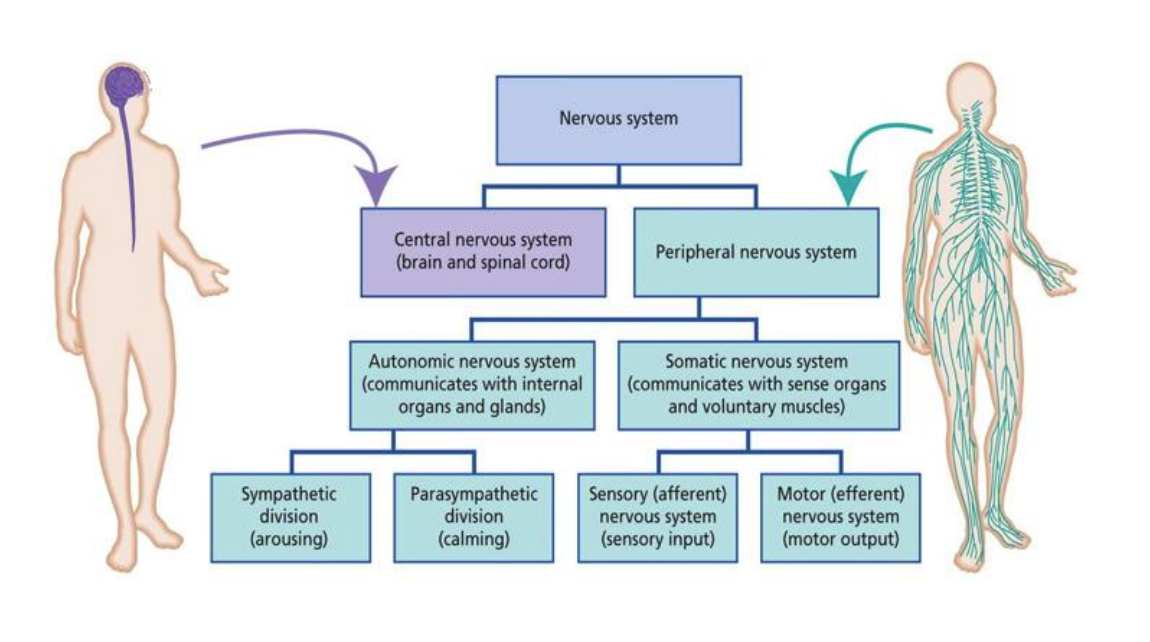Somatic Approach to Complex Health and Stress Trauma
One of the fundamental truths of complex health, is that the body is experiencing danger or threat. The question becomes, ‘how do we help the body feel safe again’?
At Illuma Health, we take a somatic approach to addressing the physiological threat experienced during complex health conditions and restoring safety to the body.
The Autonomic Nervous System in Brief
To understand this in more detail, let’s take a brief look at the autonomic nervous system, which is critical in supporting self-regulation capacities, because it helps to regulate the physiological systems that support both activity and rest.
The ANS is made up of two branches: sympathetic and parasympathetic. Both work together to respond to safety and threat.
The Sympathetic branch is where activation occurs. We access this part of ANS when we are required to take action.
The Parasympathetic branch is where rest and digest response occurs.
A healthy ANS will flow between both aspects in order to respond to external and internal environments and self-regulate.
When the nervous system perceives something as dangerous, sympathetic activation rises to respond to the threat and protect ourselves. This response is broken into two categories:
Flight or Flight response – danger signals are sent through the nervous system to respond to danger.
Freeze/shut down – a hard brake slams on the nervous system telling the body ‘no more’ and it freezes.
Response will differ depending on the perceived nature of threat and baseline neurological health. This means that the same threat or activation stimulus may produce a completely different response in two people. Therefore, when addressing complex health conditions, it is important to understand individual triggers and the person’s unique response which may vary both physiologically and psychologically.
To learn more above the ANS response, you can read about Steven Porges Polyvagal theory in which he terms these responses as ‘neural platforms’ that support different categories of behaviour. Key to Porges’ theory is the understanding that our developed sense of safety from healthy attachment is fundamental to a healthy functioning ANS.
Understanding the experience of danger during complex health conditions
During the lifespan of complex health conditions, the body is experiencing a constant state of physiological danger. Resources are constantly being deployed to attack and defend. This expands beyond the ANS – the brain and the endocrine system launch complex responses in an effort to self-protect.
Sympathetic activation is in overdrive and may move between both fight or flight and freeze response.
Over time, this may cause miscalibration of neuroceptors and alter our experience of both exteroception (what is occurring beyond the body) and interoception (what is occurring in the body). This may result in both physiological and psychological dysregulation – i.e. the onset and worsening of biological symptoms as well as mental and emotional discomfort (e.g. anxiety) The manifestation of symptoms may vary from person to person based on their cumulative experience and existing predispositions.
Neurobiology of Trauma Functions
When working with complex health and traumatic stress, it is essential to understand the neurobiology of trauma functions. Our ability to respond to stress/trauma and self-regulate is governed by the health of our ANS. This is primarily formed during our developmental years and is continually shaped by our perception of safety and danger within social context.
As babies and young children, we are reliant on our caregivers to respond to our needs, provide safety and help us to co-regulate. This secure attachment teaches us what is safe, what is unsafe and how to respond to threat. It supports development of a healthy amygdala and autonomic nervous system. When secure attachment is not provided, the ANS does not develop to the required capacity to support healthy response to danger. This underpins our ability to respond to the external world and may inhibit social interactions and physiological responses.
When working with complex health and traumatic stress, it may be helpful to look at the baseline health and development of the ANS by exploring early childhood and developmental patterns.
Neuroplasticity – adaptations through life
While early development plays a big part in our foundational ANS health, it is not the only component. No matter how healthy and happy we are, our health can change depending on external factors and life experiences. Traumatic events, illness and prolonged exposure to stress may disrupt a well-functioning ANS that results in complex health conditions and mental/emotional distress.
Because the nervous system learns and changes through experience (neuroplasticity), the body creates a physiological map for safety and danger. Too much exposure to threat alters our neurobiology to create pathways to danger. The system becomes hardwired to seek and respond to threat.
In this instance, it us easier for our neuroceptors to interpret signals as danger, because that is what has been learned.
The good news is that due to the learning nature of the nervous system, it can be recalibrated to interpret safety and activate parasympathetic response. This is the foundation of our somatic approach to working with complex health and stress trauma
Accessing Physiological Safety – A Somatic Approach
At Illuma Health we work with a layered and multi-pronged approach to treating complex health. In addition to treating medical symptoms directly, we work with the following philosophies
Down-regulation
Often, during complex health conditions, the ANS is caught in a dysregulated fight or flight response – the body is in a danger loop. The body is in a constant state of up-regulation (it is being flooded with information). If the ANS cannot access ventral vagal/rest and digest mode, there is no opportunity for the body to self-regulate. Because the nervous system is the governing system of the body, when we work to down-regulate (reduce input of cellular information) and access a rest and digest state, all other systems in the body may be offered a chance to regulate also.
Down regulating therapies at Illuma Health include:
Somatic Therapy, Craniosacral Therapy, TRE, Hypnotherapy
Biopsychosocial Complex Health Mapping
When we look at the complex health condition from a broader perspective, we can create a map that outlines the Biopsychosocial presentation of the condition. This can give clues as to how biological symptoms have developed in conjunction with social/environmental factors and emotional baseline. Once a narrative is formed, we are better equipped to find access points to alter the complex health story from an integrated perspective.
Somatic Awareness – building physiological safety
On the basis that there may be a level of neuroceptor miscalibration, we work with somatic awareness and felt sense to identify where and how danger exists in the body. Through talking and sensing, we can inquire if the neural signals and somatic experience is truly a danger response, or a misfiring ANS response . Somatic Resourcing accesses and builds a safety response in the body which can help to recalibrate neurocepetion and create new pathways to safety and self-regulation.
Self-care Support
While therapy sessions provide a safe environment for down-regulation and awareness, it is in everyday life where recovery occurs. Many of our therapists offer self-care support practises that can be used to continue down-regulation, somatic awareness and resourcing, and the ability to stay aware of triggers and predisposed responses.
Self-care practises may include:
Meditation, somatic awareness exercises, self-hypnosis recordings, movement exercises, breath techniques to activate rest and digest response, essential oil application.
For more information on our somatic approach to complex health, please click the button below.

